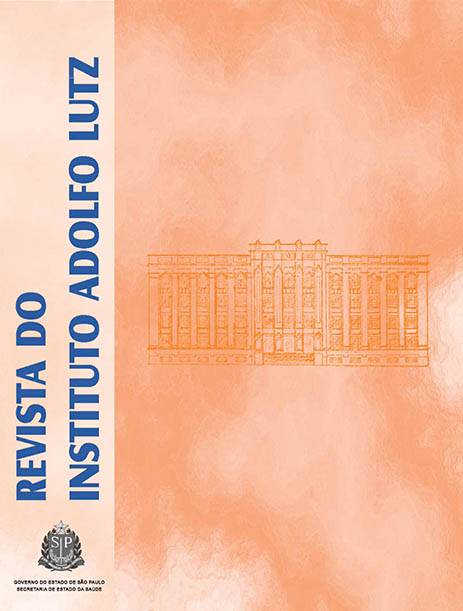Abstract
This study assessed the effect of delayed umbilical cord clampling on ferritin contents in serum samples from full-term infants aged 0, 3 and 6 months. This study was carried out at the Obstetric Center of the University Hospital of Santa Maria, Rio Grande do Sul, Brazil, from May 2008 to April 2009. 101 full-term newborns were divided into two groups: early cord clamp – from 0 second to 1 minute after birth (n = 41); and late cord clamp – from 1 to 3 minutes after birth (n = 60). Venous blood samples were collected from infants at the 1st life day, and at 3rd and 6th months. The results were analyzed by Statsoft Statistica v. 7.0 6.1.0 EN. The tests ‘Qui-square’, ‘U Mann Whitney’ and Spearman’s correlation were used for statistical analyses. The mean values of ferritin in the 3rd and 6th months samples showed to be superior in infants of the late clamping group (111.82 ng/mL and 33.19 ng/mL, respectively) than in samples from children of early clamping group (97.79 ng/mL e 24.81 ng/mL). These findings evidenced an alternative for a sustainable intervention, safe and of low cost to integrate programs which aim at the reduction of iron deficiency anemia in infants, mainly in developing countries.References
1. Monteiro CA, Szarfac SC, Mondini L. Tendência secular da anemia na infância na cidade de São Paulo (1984-1996). Rev Saúde Pública. 2000;34(6 Supl):62-72.
2. United Nations Children’s Fund. United Nations University. World Health Organization. Iron deficiency anemia, assessment, prevention and control: a guide for programme managers. Genebra: World Health Organization; 2001.
3. Silva LSM, Giugliani ERJ, Aerts DRGC. Prevalence and risk factors for anemia among children in Brazil. Rev Saúde Pública.2001;35:66-73.
4. van Rheenen PF, Brabin BJ. A practical approach to timing cord clamping in resource poor settings. BMJ 2006;333:954-8.
5. Chaparro CM, Neufeld LM, Tena Alavez G, Eguia-Liz, Cedillo R, Dewey KG. Effect of timing of umbilical cord clamping on iron status in Mexican infants: a randomized controlled Trial. Lancet. 2006;367(9527):1997.
6. Hutton EK, Hassan ES. Late vs. early clamping of the umbilical cord in full-term neonates review and meta-analysis of controlled trials. JAMA. 2007;97(11):1241-52.
7. Venâncio SI, Levy RB, Saldiva, SRDM, Mondini L, Alves MCGP, Leung SL. Efeitos do tempo de clampeamento tardio do cordão umbilical sobre os níveis de hemoglobina e ferritina em lactentes aos três meses de vida. Cad Saúde Pública. 2008;24 (Sup 2):S323-31.
8. Neilson JP. Cochrane Update: Effect of timing of umbilical cord clamping at birth of term infants on mother and baby outcomes. Obstet Gynecol. 2008;112(1):177-8.
9. Ceriani Cernadas JM, Carroli G, Pellegrini L, Ferreira M, Ricci C, Casas O, et al. The effect of early and delayed umbilical cord clamping on ferritin levels in term infants at six months of life: a randomized, controlled trial. Arch Argent Pediatr. 2010;108(3):201-8.
10. Tolosa JN, Park DH, Eve DJ, Klasko SK, Borlongan CV, Sanberg PR. Mankind’s first natural stem cell transplant. J Cell Mol Med. 2010;14(3):488-95.
11. Wiswell TE, Cornish JD, Northam RS. Neonatal polycythemia: frequency of clinical manifestations and other associated findings. Pediatrics.1986;78:26-30.
12. Shirvani F, Radfar M, Hashemieh M, Soltanzadeh MH, Khaledi H, Mogadam MA. Effect of timing of umbilical cord clamp on newborns’ iron status and its relation to delivery type. Arch Iran Med. 2010;13(5):420-5.
13. Mercer JS, Skovgaard R. Neonatal transitional physiology: a new paradigm. J Perionatol Neonat Nurs. 2002;15:56-75.

This work is licensed under a Creative Commons Attribution 4.0 International License.
Copyright (c) 2012 Instituto Adolfo Lutz Journal
